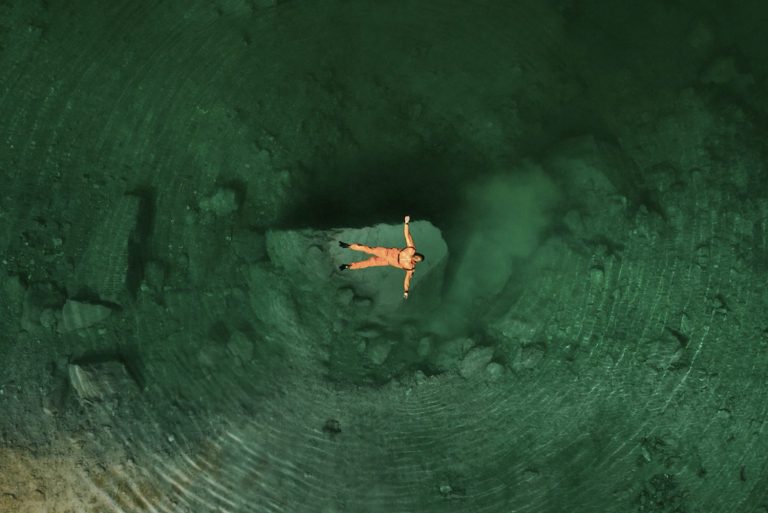
We’re thrilled to announce that the ESC 2030 challenge ( → ), themed ‘Create art as you would do 10 years in the future,’ received 186 submissions from artists spanning multiple countries. A heartfelt thank you to each artist who contributed their unique perspectives to this future-focused exhibition.
At 0→1, we see the ESC challenge as more than just an exhibition; it’s a probe into the future through the lens of art. This initiative has sparked meaningful dialogues with artists, revealing a range of hopes and concerns about what lies ahead.
One recurring theme is the intricate relationship between nature and technology. Many artists emphasized the importance of nature, yet their works also hinted at the complexities and challenges this bond with technology brings, such as water scarcity and pollution.
In our rapidly evolving world, accelerated by the ongoing pandemic, the concept of isolation is also transforming. Physical meetups have become rare, replaced by a digital presence that is both liberating and anxiety-inducing. This shift prompts us to question the kind of future we wish to inhabit, touching on issues from social inequality to political dynamics and even the persistence of hate and discrimination.
As we ponder these artists’ questions, we’re reminded of Pablo Picasso’s words: ‘Everything you can imagine is real.’ At 0→1, we’re optimistic that our collective imagination can shape a more harmonious future, perhaps one where we achieve a symbiotic relationship with nature and unlock limitless human potential.
Artist duo the2vvo (pronounced ‘the zwo’ = ‘two’ in German) is based in Los Angeles, CA. It is a collaboration between the sound artist Eldar Tagi and Lena Pozdnyakova — an architect and sculptor.
The contemporary duo performs evocative and expressive audio-visual sets that range from minimal electro-acoustic ambient to raw techno and industrial noise. Besides live performances, the2vvo record and release music and build spatial installations that are often interactive.
Attention Environment 2 is a part of ongoing research on the Anthropocene*. Including its materiality presented in junk, ‘abjected’ societal produce, abandoned pieces, and found objects that were once made and experienced by people.
These hybridized artifacts, with their parts sourced from the streets, thrift stores, and junkyards become descriptive elements – ‘composed’ and extracted micro-models of the world. These pieces are explored through the resonant qualities of their materials. As a result, noise becomes an integral part of the piece.
* The Anthropocene (/ænˈθrɒp.əˌsiːn, -ˈθrɒp.oʊ-/ ann-THROP-ə-seen, -THROP-oh-) is a proposed geological epoch dating from the commencement of significant human impact on Earth’s geology and ecosystems, including, but not limited to, anthropogenic climate change.
Jo Ho is a new media artist based in Singapore, who creates art using new technologies such as AR, VR, large-scale projections, 360 film, and multi-sensory interactive installations. She touches on the trend of a relentless push towards future bodies, future spaces, and future worlds. All in order to reflect on our deeper feelings evoked by the unknown.
Photographer and digital artist Emily May lives and works in London. In her work, she takes shape across a profusion of mediums from traditional photography techniques to creative coding software. It is a quest to discover the future of digital image generation and consumption. Subjects in her work look at self-identity in a virtual space and at emerging technologies from our physical environments. Now that Emily works with AI, her work develops the concept of camera-less photography and automated art.
Moreover, those two talented contemporary artists have joined their interests in the project ArchiGAN. Both Ho & May currently explore further the collaboration between man and machine.
‘In this digital age, the development of new technologies that aid in the inspiration and creation of art is inescapable. Our future — one of the endless possibilities regarding how we create and consume meaning in media.’
machine_nature is a collaboration between humans and machines. That utilizes a popular machine learning framework, Generative Adversarial Networks (GAN). The video’s looping fluctuating visuals and the underlying sonic drone of computer processing hint at two aspects. The future and the past, are a nostalgia for something we faintly recognize. Yet, this moving imagery is absolutely new and created by an algorithm that actively learns from records of our artistic sensibility.
‘Will we be alone in creating art in 10 years in the future? Will the machine replace the artist?’
Michael N. Meyer is a contemporary American artist. In his work, he stretches, tweaks, and bends the fundamental functioning of his photographic tools. He also examines ways to create cascading cultural effects throughout social structures. In particular, the effects that are created by the design of the devices and the processes of photographic practices.
‘Our physical human selves are enmeshed as digital cyborgs in an information network encircling the globe. Rendered as data sets, we are in constant, if unwitting, commercial movement within this system. If we could follow our informational avatars along these data lines, traversing the network intentionally as a pure signal, what would we perceive?’
Mayer’s One Pixel series are philosophical meditation on human perception within a culture based on a quantifying telemetric vision. In which images are informational packets that can be computed, parsed, copied, and transmitted.
Using self-made single-pixel cameras, he engages New York City’s street grid and subway system as informational networks. Tracing delicate flows of electrical signals: a metaphorical dive into the wires of our networked lives. As a result, those dense abstract landscapes of luminous signal and gritty noise oscillate between aural, visual, and informational states. In these images, the electric signal and the distortions of its process of realization are placed front and center. Like an algorithm, a viewer must analyze each image, and examine and calculate sense from quantized signifiers.
Originally from China, contemporary visual artist Yawen Fu is currently based in Amsterdam. The sense of alienation and loneliness are the two main directions of her exploration. By creating distance and boundaries she transfers this sensory perception to a visible personal space, a refuge. Her works are full of elements of the virtual world and visual illusions. To her, that ‘other side’ of reality can only be near to our complex perception or experience of the real world.
With her video work ‘There’, she attempts to find boundaries and to divide, and distinguish different layers. The bathtub is perceived as an intimate space of a home environment. Where TV monitor shows that separate perception from reality. Since the screen becomes a gradually more important source of our cognition and experience.
‘I’m interested in the lonely status of an individual: being alone in a small, intimate place. It seems to be our original and final status before we are born and after we die. (During our lifetime, we went back sometimes to this situation.) For some, this private space is where we can take refuge from the outside world, to relax, to make sense of the world, or to feel in control. In contrast, some may feel trapped inside this private space, unable to reach out.
It is a realm that only one individual is aware of and has access to. What is there? I depart from this question and try to enter my inner world from a third-person viewpoint. (In a sense, the individual can be seen placed at the core of a multilayered shell. Like an onion-shaped structure surrounded by layers of protection.)’
French artist Sylvain Souklaye is currently based in New York. He works at the intersection of live performance, sound art, performative installation, and social research. Mostly his interests lie in sampling intimacies about people who don’t belong to a determinate identity, gender, class, color or nationality. Furthermore, his performances are a collage of individual memories which are re-enacted for and via the audience. His methods characteristically involve intense physical acts as well as the use of unsettling intimacy.
His digital and physical video performance Data Surrealism is about the battle for abstraction and tangibility into the digital capitalism era. It is an ongoing writing and thinking experiment. That explores our daily silence crisis between those screens that continuously define us and the digital/the internet as the belief that can’t be denied by anyone. Souklaye wants to introduce the concept of ‘Improvisation systématique’ (‘systematic improvisation’). Because industrial productivity and premeditated serendipity are the foundation of our conceit fabric.
Primary, with Data Surrealism, he aims to follow our curiosity for and instinctive need for sensitivity. To investigate our primal need for abstraction and poetry under surveillance capitalism and automated behavior made as a technological revolution. Realism pushes us to survive into encrypted secrecy because our desire and freedom have been coded. As data is all around us, we only have left a ‘grain de folie’ (‘grain of madness’) to reason with the digital regime. While we live in a data-driven era life becomes more and more a unit. A Unit that is ready to be articulated and less and less a singularity to cherish.
‘DATA SURREALISM is about the essentialism of perdition, of the shadow, the unknown, the unsettling, the unsolved.
DATA SURREALISM is a token to the imagination, to the mind when our eyes and fingers are the objects of a (graphic) design.
DATA SURREALISM aims to be a reminiscence of us as living, breathing, and imperfect oddities lost in the universe.’
Fascinated by the macroscopic world, and the concepts of minimalism and surrealism Sarah Song believes mystery reveals itself through nature and time which we often overlook. She experiments with patterns, texture, and mixed media so that her vivid imagination can be captured and realized. For her, the digital world seems too colorful and too polished. Instead of creating the so-called ‘blissed-out heaven’ she just wants to show a simple imaginary future without humankind. To display the virtual landscapes that change back and forth between imagination and reality.
In particular, her computer-generated animation The Perfect Progressive Future (a piece made during an artist-in-residence program in Iceland) merges two visions of landscape. Not only the invented digital built-in virtual spaces but also the mapped ones created with images from places that she physically visited in Iceland.
‘When we go back to the fundamental questions about the nature of matter and this material world, what is the meaning of our existence and how should we interact with this ‘physical’ world?’
→
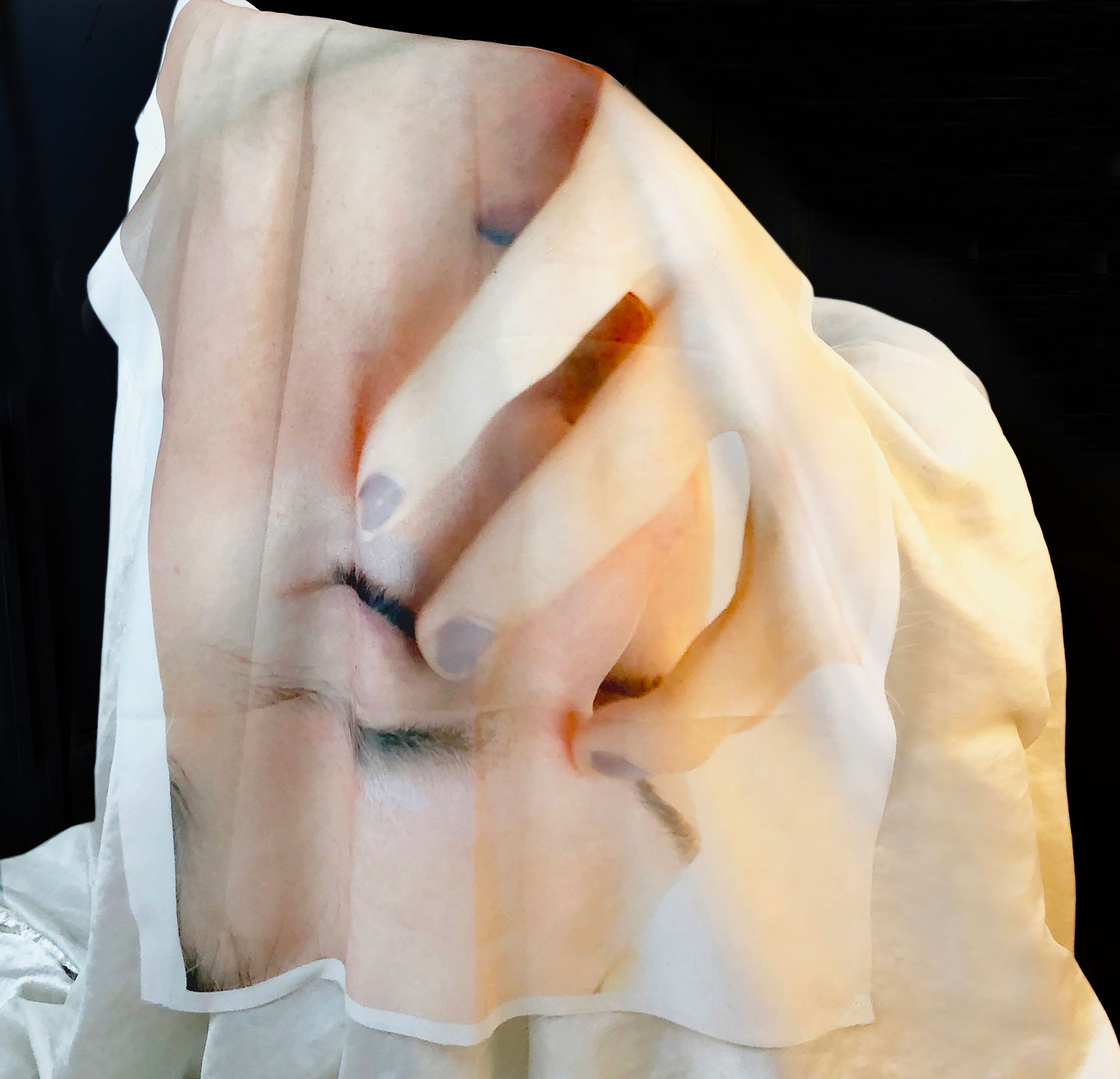
Paige Greco is interested in the dualities of paradoxes within vulnerability. She believes that people instinctively conceal their vulnerability. However, art, especially photography, aims to present that vulnerability in defiance of an inability to do so ourselves. To her, this dual nature creates a link between the medium and the body. This is also witnessed with how the body is confined to its skin, and the medium is to its surface.
‘How can we photograph what is unseen?
What is felt on the inside?
And what does it look like –
How to peel the fruit, to bite the swans.’
In particular, The Touch Cloak works to fill what we continue to gradually lose and what may be lost in the future — tactic artwork and human connection/touch. The piece works to drape the physical body as the image depicted on the cloth mirrors the embrace of skin-to-skin.
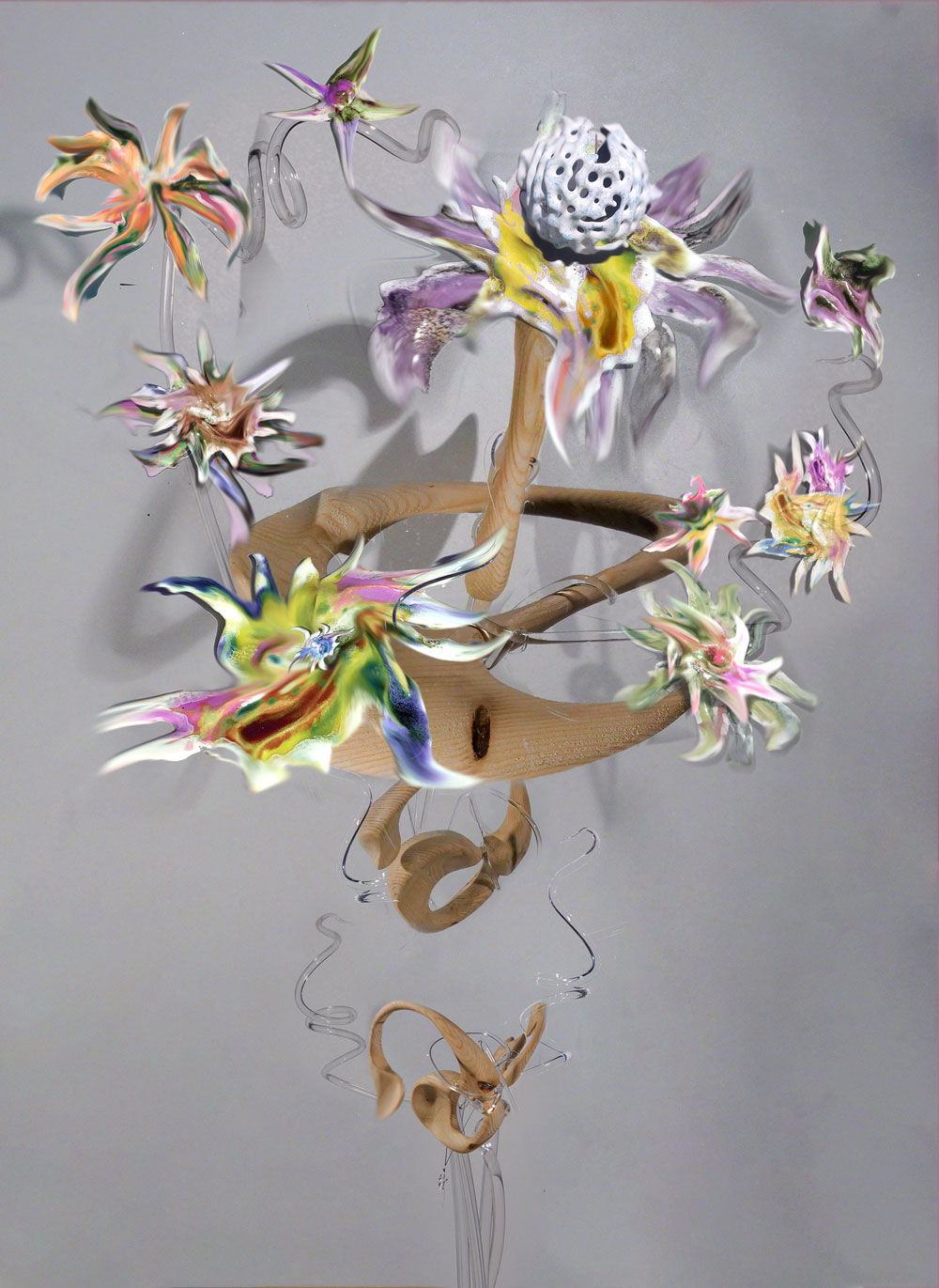
German artist Tom Schneider and French — Arthur Tramier formed the designer duo Tom et Arthur. Particularly their collaborative practice encompasses the fields of design and art. They create deep domestic layouts — applied and fantastic situations through counter-correct objects, spaces, and dirty intuitions.
Tom et Arthur produce collages fusing novelty flowers, made from wood, ceramics, and glass. With Xenia, they bring flowers to the future. The digital bouquet is made from material-oriented designs and crafty blooming structures and draws a reverse Xenia. That shares not only an image of a past event but also announces and generates upcoming energies for sympathy.
‘Xenia [noun]
1. (botany) the immediate influence of pollen from one strain of a plant upon the endosperm of another strain.
2. (ancient Greece) a custom of hospitality, a still life painting sent to the guests in the aftermath of a dinner depicting the shared dishes. Enclosed by the past and the prospect of future events fuses the image of a doubled memento.’
Special thanks to Bomi Kim →

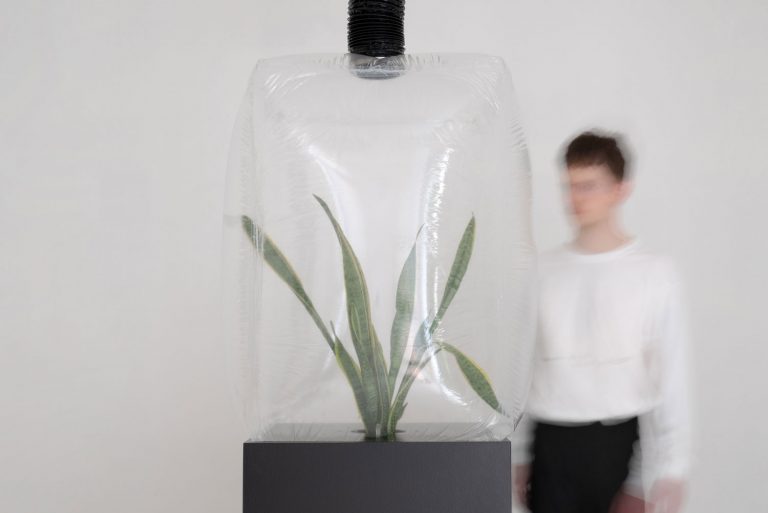
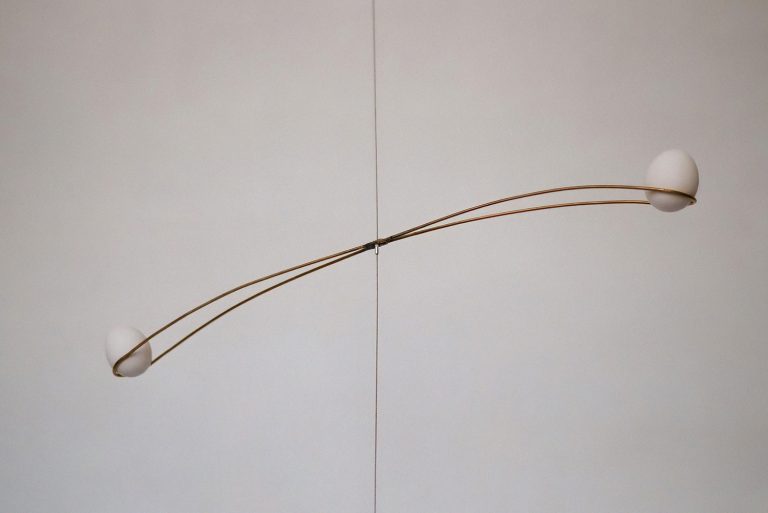
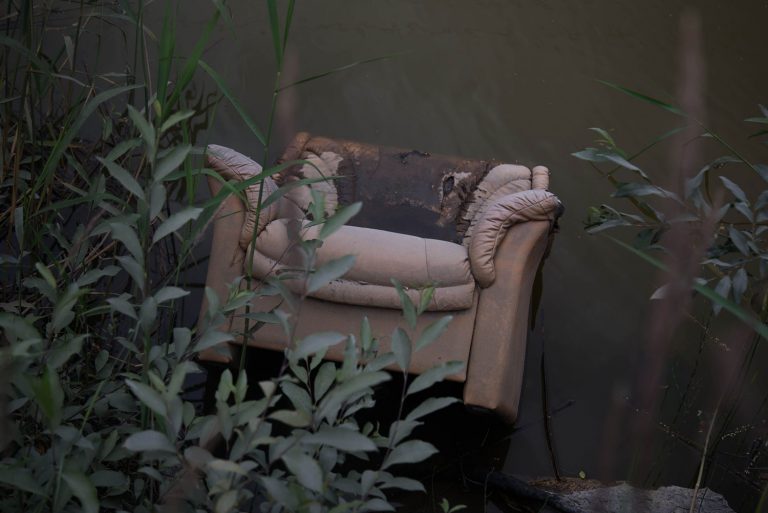
Independent Art & Design Gallery 0→1 © 2024
Stay in the loop with 0→1. Join our email list for the latest news, artist highlights, and first dibs on our exclusive collections. Dive into the art world with us — curated, simplified, and personal.
(We respect your inbox. Our updates are curated for value, and you can unsubscribe anytime. No spam, just art.)
We use cookies to improve your browsing experience; details in our Privacy Policy →